When it comes to city passes and travel cards, it’s usually fairly easy to figure out whether they would be worth it for you or not. For things like the Paris Pass or London Pass, they have a list of the most popular attractions and how much they cost, right there for you to see. The Swiss Travel Pass, however, is shrouded in mystery, or at least it was until I spent several days tracking down all of the prices and benefits.
A great many of the visitors and commenters on my popular page about where to go in Switzerland on a short visit are wondering whether the Swiss Travel Pass is a good deal. Embarrassingly, I’ve always had to answer that I found the pass too confusing to confidently advise people on. Now that has all changed, after literally days of research.
Note: This article was last updated in February, 2024.
Disclosure: This is a reader-supported website and some of the links are affiliate links where a small commission is paid to help keep this site going, but the cost to visitors is the same. The Swiss Travel Pass seems quite expensive at first, so it felt like it might be hard to get your money’s worth out of it. As it turns out, it’s pretty easy to get good value, and it’ll be a good deal for many visitors.
New in 2024
Prices increased an average of 5.9% from 2023 on the Swiss Travel Passes, but the Half Fare Card remains at CHF120, which is where it’s been for many years. Train fares in the country increased by similar percentages so the value is basically unchanged. There were no other notable changes to service or the included attractions and train routes.
>>>Buy the Swiss Travel Pass online
Where to stay in Interlaken and the Lauterbrunnen Valley
Since most people reading this will be visiting the Interlaken area and I get so many questions about it, I decided to write a detailed guide on which area to stay in while visiting this area.
>>>Where to stay in Interlaken or the Lauterbrunnen Valley in Switzerland
I included many huge photos in that post so readers will be able to get a better idea of what each place looks like and they are worth a look by itself.
>>>Lucerne or Interlaken: Which to visit and how long to stay?
The article just above will help you decide on how long to spend in each of Switzerland’s two best tourist areas.
Are you 100% sure where you want to go in Switzerland? This should help
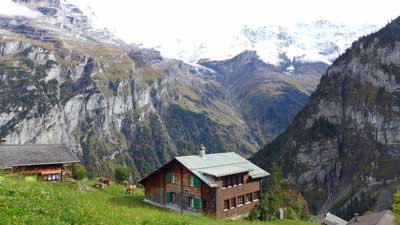
Zurich and Geneva are pleasant but dull. The good news is that Switzerland is packed with amazing sights and none of them are the big cities. If you aren’t 100% locked in yet, please read the article below and I think you’ll enjoy it.
Is the Swiss Travel Pass a good deal? Here's the short version

The bottom line is that the scenery, train journeys, and cable car rides in Switzerland are stunning and not found anywhere else in the world. They are also quite expensive if you pay for them one at a time. So no matter how you visit Switzerland, you are going to be paying quite a bit, or skipping the absolute best things that you’ve come there to see.
With good planning it’s quite easy to get great value out of a Swiss Travel Pass, but it might be a poor choice for those who don’t like to plan ahead. You can easily do a scenic train ride and a cable car in the same day, and still have time to do a scenic hike in the process.
First class or second class? Good news for most people
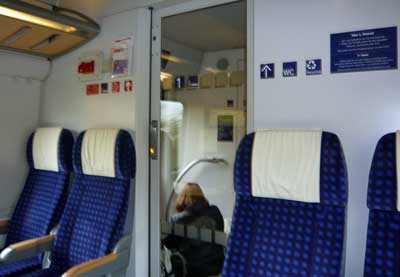
That said, Swiss Trains are literally the nicest in Europe and even the Second Class seats and carriages are nicer and roomier than trains in neighboring countries. The First Class seats are larger and nicer with only 3 across the cabin instead of 4, but honestly Second Class is perfectly comfortable for almost everyone.
Again, First Class on European trains like this is generally popular with business travelers where the company is paying and they need to get work done during the ride, and also senior citizens who don’t want to worry about a carriage full of backpackers. For most of the rest of us, Second Class is more than comfortable enough and the seat width and legroom compare to business-class airline seats. I’m a big and tall guy and I almost always travel in Second because it’s plenty comfortable enough and all the seats arrive at the same time anyway.
The longer you'll be in Switzerland, the better deal a Swiss Travel Pass will be
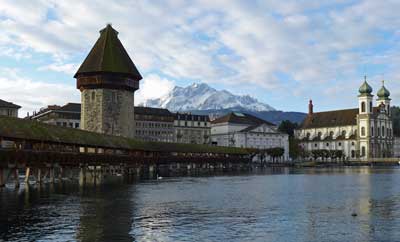
In other words, if you are staying 5 days or fewer, you have to do the math to determine your best option. But if you are spending even 6 or 7 days in Switzerland then the 6-day or 8-day Pass is almost guaranteed to be a great deal and your best choice. Once you have a Swiss Travel Pass you’ll absolutely love the ability to just hop on any train (excellent trains, always on time) and most boats and cable cars without having to worry about the cost. The per-day cost of an 8-day Pass even if you only use 6 of those days is about CHF65, and Switzerland is filled with amazing train rides and boats and cable cars that can get you that much value before noon each day.
Schilthorn (50% discount) and Jungfraujoch (25% discount) are cheaper with a Swiss Travel Pass
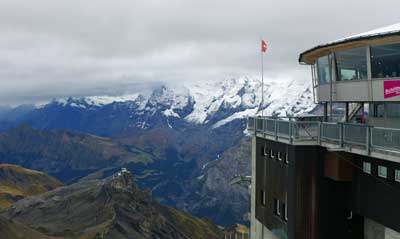
Both of those peak experiences are extraordinary and different from each other. Even so, compared to Jungfraujoch, Schilthorn is also faster and more comfortable on the way up and down. You can enjoy an excellent visit to Schilthorn in 4 hours or so (or a bit longer if you eat at the spinning Piz Gloria restaurant at the top), while a visit to Jungfraujoch requires closer to 6 hours.
NOTE: Schilthorn closes for maintenance for a week or two in late November most years.
Consider the Swiss Half-Fare Card instead
If you AREN’T going to be doing two or more of the long (and expensive) scenic train trips, you will get much better value out of the Swiss Half-Fare Card, which is explained a bit below.
Mt Rigi, near Lucerne, is 100% covered by the Swiss Travel Pass
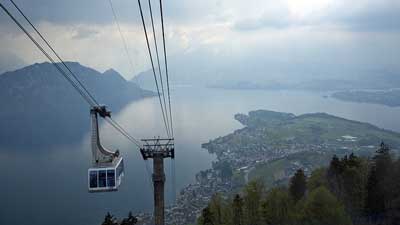
Is a Swiss Travel Pass right for you?
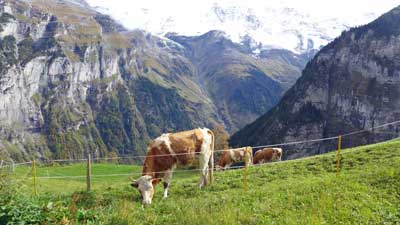
Most people only visit Switzerland for 5 or 6 days at most, so the 3-day and 4-day passes are the ones to focus on. But if you are staying for 8 days or more, those longer passes are almost certainly a great deal for you.
Long story short, if you plan on doing 2 of the more expensive scenic trains and the Jungfraujoch railway or the Schilthorn cable car, then the pass will save you money. Switzerland is expensive, but it’s worth it, and the travel pass can help make it a bit more affordable.
What the Swiss Travel Pass includes
- Free rail travel on normal trains and most scenic trains
- Discounted travel (about 50%) on popular tourist mountain trains
- Discounted travel (about 50%) on popular tourist cable cars
- Free travel on public transport in 75 towns and cities
- Free entry to around 500 museums in Switzerland
The Swiss Travel Pass covers the fare on the most popular scenic and panoramic trains. You can choose a normal seat in a regular carriage for no additional cost, but there is a supplement of CHF8 to CHF49 for a reserved seat in one of the special panorama carriages on these routes.
Prices of the 2024 Swiss Travel Pass
1st Class
- Adult 3-day Pass: CHF389
- Youth (4 to 25) 3-day Pass: 274
- Adult 4-day Pass: 469
- Youth (4 to 25) 4-day Pass: 330
- Adult 6-day Pass: 602
- Youth (4 to 25) 6-day Pass: 424
- Adult 8-day Pass: 655
- Youth (4 to 25) 8-day Pass: 469
- Adult 15-day Pass: 723
- Youth (4 to 25) 15-day Pass: 512
2nd Class
- Adult 3-day Pass: CHF244
- Youth (4 to 25) 3-day Pass: 172
- Adult 4-day Pass: 295
- Youth (16 to 25) 4-day Pass: 209
- Adult 6-day Pass: 379
- Youth (16 to 25) 6-day Pass: 268
- Adult 8-day Pass: 419
- Youth (16 to 25) 8-day Pass: 297
- Adult 15-day Pass: 459
- Youth (16 to 25) 15-day Pass: 328
Swiss Travel Pass Flex
This version costs a bit more, but you don’t have to use the travel days consecutively. It’s a great option for anyone who won’t be taking longer train rides each day.
- Adult 3 Flex days in 1 month (1st Class): CHF445
- Adult 3 Flex days in 1 month (2nd Class): 279
- Adult 4 Flex days in 1 month (1st Class): 539
- Adult 4 Flex days in 1 month (2nd Class): 339
- Adult 6 Flex days in 1 month (1st Class): 644
- Adult 6 Flex days in 1 month (2nd Class): 405
- Adult 8 Flex days in 1 month (1st Class): 697
- Adult 8 Flex days in 1 month (2nd Class): 439
- Adult 15 Flex days in 1 month (1st Class): 755
- Adult 15 Flex days in 1 month (2nd Class): 472
Where to buy the Swiss Travel Pass
The Swiss Half-Fare Card – A better option for many visitors
Far less confusing than the Swiss Travel Pass, you can instead get a Swiss Half-Fare Card, and it will be a better deal for many travelers. The price is lower and it’s much easier to do the math, and the discounts are greater on some things as well.
- Swiss Half-Fare Card for 30 days: Adults – CHF120 or US$129
What you get:
Those who buy the Swiss Half-Fare Card will get 50% discount on all trains, buses, and boats in Switzerland for up to 30 days, as well as 50% off all public transportation in 75 cities and towns.
>>>Buy the Swiss Half-Fare Card
Why the Half-Fare Card is a better deal for many
While the Swiss Travel Pass is a great deal for those doing many of the expensive scenic journeys and mountain sights within a few days, it’s not good value for those who are doing fewer of the expensive trips and/or those who are staying longer. Also, the Swiss Travel Pass only provides a 25% discount on the amazing Jungfraujoch Railway, which costs between CHF120 and CHF224 return depending on your starting point, while the Half-Fare Card provides a 50% discount.
The math is simple as well. You can just add up the cost of the trains, boats, and buses you’ll be taking while in Switzerland, and if the total is more than CHF240 or so, the Half-Fare Card will save you money.
Example itinerary:
- Zurich to Interlaken train (2nd Class): CHF50
- Schilthorn Cable Car: CHF112
- Jungfraujoch railway from Interlaken: CHF205
- Interlaken to Lucerne train (2nd Class): CHF33
- Mt Rigi roundtrip from Lucerne: CHF84
- Engelberg (near Lucerne) to Mt. Titlis Cable Car: CHF92
- Lucerne to Zurich train (2nd Class): CHF25
Total per person: CHF601
Total with Half-Fare Card (including price of card): CHF420.50
It would be tough to do all of those things in 4 days, although it is possible. If you bought a 4-day Swiss Travel Pass here is how it adds up:
4-Day Swiss Travel Pass: CHF259
Supplements for Schilthorn, Jungfraujoch, and Mt. Titlis: CHF203.25
Total cost: CHF462.25
Bottom line on the Swiss Half-Fare Card
Since the Half-Fare Card lasts 30 days and provides a larger discount on Jungfraujoch, it is better value for visitors who want to include that scenic top-of-Europe rail journey on their trip. The discounts also add up more quickly on Schilthorn and Mt. Titlis trips, just to name two examples, and you don’t have to take many longer rail journeys to get value out of the Half-Fare Card.
Swiss Saver Day Pass (A one-day unlimited travel pass)
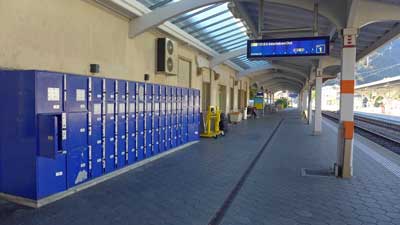
If you buy the Saver Day Pass at least 21 days in advance (and up to 60 days in advance) the 2023 cost is:
- 2nd Class (with Half Fare Card): CHF29
- 1st Class (with Half Fare Card): CHF82
- 2nd Class (with no Half Fare Card): CHF52
- 1st Class (with no Half Fare Card): CHF97
Once you research the normal cost of Swiss train fares you’ll see that the above prices are a very good deal for anyone riding more than 150 kilometers or so in a day. If you are just going, for example, from Zurich to Lucerne or Interlaken on a day, it’ll be cheaper to just buy that ticket individually. But if you are going from Geneva or Montreux to Interlaken or Lucerne then the Saver Day Pass will be much cheaper. Better still, you can use a Saver Day Pass to go from Interlaken to Geneva and back on the same day on the Goldenpass line and returning on the faster train through Bern, and it will still all be included for free.
If you don’t buy a Saver Day Pass at least 14 days in advance it’s more expensive, and if you only buy 1 to 3 days in advance it’s VERY expensive, so the key is to buy early. This is all confusing, but the Saver Day Pass should be a great option for many people only in Switzerland for one to three days.
Popular Swiss panorama scenic trains
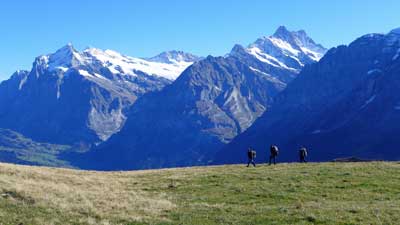
- Glacier Express
- Route: Zermatt to St. Moritz
- Train type: Panorama
- Journey time: 8 hours 3 minutes
- Distance: 291km
- 1st Class fare: CHF272
- 2nd Class fare: CHF159
- Compulsory seat reservation fee: CHF44 or 49
- Supplement for Swiss Pass holders: 13 to 33 for panorama carriage
- Bernina Express
- Route: Chur to Tirano and Lugano
- Train type: Panorama and bus
- Journey time: 4 hours 13 minutes and 3 hours 10 minutes
- Distance: 148km and 90km
- 1st Class fare: CHF113
- 2nd Class fare: CHF66
- Compulsory seat reservation fee: CHF32
- Supplement for Swiss Pass holders: 10 to 14 for panorama carriage
- GoldenPass Line
- Route: Lucerne to Montreaux
- Train type: Panorama
- Journey time: 5 hours 8 minutes
- Distance: 191 km
- Prestige Class fare: CHF131
- 1st Class fare: CHF96
- 2nd Class fare: CHF56
- Supplement for Swiss Pass holders: 8 to 15 for panorama carriage
- Gotthard Panorama Express (formerly Wilhelm Tell Express)
- Route: Lugano or Locarno to Lucerne
- Train type: Panorama and boat
- Journey time: 5 hours 21 minutes
- Distance: 182 km
- 1st Class fare: CHF164
- 2nd Class fare: CHF135
- Supplement for Swiss Pass holders: 39 to 49 for panorama carriage
- Swiss Chocolate Train
- Route: Montreux to Broc round trip
- Train type: Panorama or First Class
- Journey time: X hours X minutes
- Distance: 82 km
- 1st Class fare: CHF99
- 2nd Class fare: 89
- Supplement for Swiss Pass holders: 39
Popular Swiss scenic and theme trains
The scenic trains below are also extremely popular as sightseeing journeys rather than just as transportation, but can be used as both.
- Jungfraujoch round trip
- Route: Interlaken to Jungfraujoch
- Train type: special mountain train
- Journey time: 4 hours 41 minutes, round trip, plus time on top
- Distance: 73 km
- 1st Class fare: N/A
- 2nd Class fare: CHF224
- Supplement for Swiss Pass holders: 147 (so, a saving of CHF77)
- Gornergrat Railway
- Route: Gornergrat Railway
- Train type: Cog railway
- Journey time: 44 minutes return
- Distance: 10 km
- 1st Class fare: N/A
- 2nd Class fare: CHF90
- Supplement for Swiss Pass holders: 45
- Rigi round trip
- Route: Lucerne to Rigi
- Train type: Cog railway
- Journey time: 3 hours 25 minutes, plus time at the top
- Distance: 58 km
- 2nd Class fare: CHF78
- Supplement for Swiss Pass holders: None (this one is free with the pass)
- Mt Rigi Excursion (one-way and walk down)
- Route: Lucerne to Mt Rigi
- Train type: cogwheel train and/or cable car
- Journey time: 45 minutes up
- 1st Class fare: N/A
- 2nd Class fare: 49
- Supplement for Swiss Pass holders: 0
- Lotschberg Mountain Route and Centrovalli
- Route: Bern to Locarno
- Train type: Narrow gauge
- Journey time: 4 hours 40 minutes
- Distance: 212 km
- 1st Class fare: CHF158
- 2nd Class fare: CHF90
- Supplement for Swiss Pass holders: 5
- Jura round trip (Watchmaking Tour)
- Route: Neuchatel through Jura
- Train type: Regular
- Journey time: 3 hours 0 minutes
- Distance: 143 km
- 1st Class fare: CHF168
- 2nd Class fare: CHF108
- Supplement for Swiss Pass holders: 0
- Pre-Alpine Express
- Route: St. Gallen to Lucerne
- Train type: Regular
- Journey time: 2 hours 15 minutes
- Distance: 146 km
- 1st Class fare: CHF83
- 2nd Class fare: CHF47
- Supplement for Swiss Pass holders: 0
- Jura Foot Line
- Route: Basel to Geneva
- Train type: Regular
- Journey time: 2 hours 40 minutes
- Distance: 248 km
- 1st Class fare: CHF132
- 2nd Class fare: CHF75
- Supplement for Swiss Pass holders: 0
Popular Switzerland cable car rides
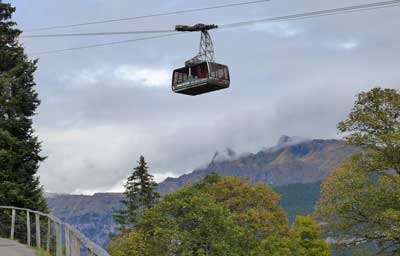
- Schilthorn
- Route: Stechelberg (Lauterbrunnen) to Schilthorn
- Train type: cable car
- Journey time: 1 hour
- 2nd Class fare: CHF108
- Supplement for Swiss Pass holders: 54
- Engelberg to Mt. Titlis cable car
- Route: Engelberg to Mt. Titlis
- Train type: cable car
- 2nd Class fare: CHF96
- Supplement for Swiss Pass holders: 46
The Swiss Travel Pass also includes free museum admission, but…
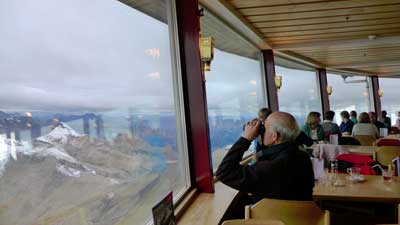
The problem is that the museums are only free on valid travel days, and almost no one would visit more than one or two museums with a Swiss Travel Pass. The trains and cable cars are so expensive that the pass gives very good value to cover those, so you don’t want to waste precious sightseeing time walking through a museum that only costs CHF10 anyway.
In other words, calculate the value of a Swiss Travel Pass on the travel savings only, and if you visit a museum here or there, then great. Most people are better off trying to squeeze in an additional train ride each day, and ignoring the museums. Switzerland is all about the outdoor scenery. As nice as the museums may be, they are not why you are there.
The pass includes free public transport in most Swiss cities
Similar to the free museum part of the offer, it’s best to ignore or minimize the value of free public transportation. It could be helpful in Zurich, but in most other Swiss tourist towns you won’t need much public transport. In fact, in Interlaken, each hotel or hostel guest automatically gets a card for free public transportation within the town (including between the two train stations).
So you might use a ride or two each day on public transport, but that won’t add up to much in terms of value of your Swiss Travel Pass.

Dear Roger,
I was lucky to have found this site and am really amazed at all your replies. Therefore, I would like to ask your valued opinion on my impending trip with my sister to Switzerland this October (15 days, arrival and departure days not included). Following is my itinerary:
3 Oct: Arrive Geneva at about 8.45pm (fr Bristol, UK)
4 Oct: Starts our Swiss Travel Pass, morning boat trip around Geneva, afternoon go to Zermatt
5 Oct: Stay in Zermatt, excursion to Gornegrat & Matterhorn Glacier paradise (doeable, two places in one day?)
6 Oct: Zermatt to St Moritz by Glacier Express, then to Pontresina
7 Oct: stay in Pontresina, excursion to Tirano in the morning to visit the church bef 12pm. Then return trip take the Bernina Express to St Moritz.
8 Oct: Pontresina to St Gallen, visit St Gallen library, then do a quick round to Vaduz,Leichenstein. Return to Apenzell to stay.
9 Oct: Appenzell, excursion to Berggasthaus-Aescher-Wildkirchi, Unaresch Museum
10 Oct: Appenzell to Lake Constance, stay in Konstanz (Not sure the Swiss Travel pass covers this Lake Constance area because most areas we intend to visit are on Germany side)
11 Oct: Konstanz, Excursion to Mainau, Meersburg, UNteruhldingen (the stilt museum)
12 Oct: Konstanz, boat to reichanau,Stein Am Rhein, Schauffhauserland, bus/train to Rheinfall
13 Oct: Konstanz to Lucerne, stay in Lucerne. Excursion to Mt. Rigi/ Weggis
14 Oct: Lucerne, excursion to Mt. Titlis, boat cruise around Lucerne
15 Oct: Lucerne to Interlaken by Golden pass, then continue on to Murren to stay. However some feedbacks mentioned that Murren is very quiet from October onwards – so not sure wise to stay here or to go Wengen to stay.
16 Oct: Murren, excursion to Jungfraujoch
17 Oct: Murren, excursion to Schilthorn, Grimmelwald, Trummelback fall
18 Oct: Murren to Interlaken to take the Golden Pass train to Montreux. Get down and look around. Then continue journey to Geneva. Travel Pass ends here.
19 Oct: Geneva to Bristol (flight 10.50am)
Do you think its doable, or I need to cut back some excursions?
Thank you.
Camellia,
That is a very impressive itinerary. I haven’t done all of the things on your list, but I’m at least familiar with most of them. By the way, I’ve been all over the UK and if I had to choose a place to live that isn’t London it would be Bristol (or perhaps Brighton).
It looks like you are pretty busy on most days, but many other days look like you’ll have some flexible time. I think this is a great way to do it, partly because you’ll be working around the weather a bit, and that is actually true for visits year round to the Alps. From about October 15 through December 15 it’s the slow season in the mountain villages such as Murren and Gimmelwald, and some hotels and restaurants close during that period. It’s the end of the summer hiking season and the skiing and winter season usually starts in mid December. But other places do stay open so as long as you can find accommodation I think you’ll enjoy it.
The weather in Switzerland can be a tricky thing all year round, with summer actually being the rainier months in the Alps. At any given time there can be thick clouds around the mountain tops, making a visit totally pointless. It’s often sunny in the morning and then cloudy in the afternoon, or sometimes the other way around. So in some cases the place you want to go will be basically closed for half a day, so it’s good to have backup plans and a flexible schedule. Since you’ll have the Swiss Pass you can just jump on board trains or go on any boat ride or most cable car rides with no notice, so you can alter your plans as you go and as the weather allows.
You should also be able to find hotel rooms on short notice in all of those places since it’s the end of the shoulder season. I usually prefer to book hotels as far in advance as I’m sure about. In Switzerland you can do that using booking.com or one of the other websites that allows for cancellation with little or no penalty. Most likely your schedule will work out just fine, but if Zermatt happens to be foggy when you have it scheduled it would be nice to be able to go back another day. And you can keep a few things to do if your plans change such as an afternoon in Bern if it happens to be raining or foggy in the mountains.
So long story short, because of the unpredictable weather in Switzerland, most savvy visitors don’t lock in plans until they are ready to do something. All of the peaks have webcams that show current conditions and forecasts, and the local hotel and tourism people keep an eye on them as well because it’s important to do so. I’m sure you’ll have a wonderful trip and that you’ll get mostly good weather. Let me know if you have any other questions. -Roger
Thank you very much Roger and God bless you and help with all this hard work, l don’t know how you can do all this so efficiently!
Good morning Roger and thank you very much for all your help. I have taken your advice and dropped Zermatt so we will stay two nights each Montreux, Luzern and Interlaken and one in Geneva. Do you know if the Supersaver fare applicable on the Golden Pass line?
Naim,
The Supersaver fares are offered on some trains, and I think it tends to be the less popular routes and departure times. If one is offered on the GoldenPass line then you can use it, although I’m not sure if you could also upgrade to a panoramic carriage with it. And keep in mind that Supersaver tickets are non-refundable and non-changeable, so if you miss your train you can’t use it on the next departure. -Roger
Hi Roger,
I want to experience the best of train journeys in swiss. I want to take the glacier express from Zermatt to St. Mortiz. I will be entering Switzerland from Geneva. Can I take a train from Geneva to Zermatt? And will that be covered if I take a Swiss Pass?
Planning to take the next day Glacier train to St. Mortiz. From there I want to head to Lucerne. Should I stay a day in St. Mortiz?
Adil,
The train from Geneva (changing in Visp) and on to Zermatt should be covered with a Swiss Travel Pass, but once in Zermatt it only gives you a 50% discount on the mountain railways. That sounds fantastic and I think a day in St. Moritz would be great, especially if the other option is jumping right back on the train again to go back in the other direction. -Roger
Thanks again for your reply and sorry for frequent change of plan. We have now decided on 2 night Montreux, golden train to Luzern for one night, doing the Pilatus, Rigi, Titlis. two nights Interlaken taken in Schilthorn and the Jungfrau, travel to Zermatt for one night then to Geneva for last night. your input on this plan, choice of trains and Train passes will be appreciated. would you think dropping Zermatt or Luzern is better
Naim,
Your plan looks quite good, but each of those mountain top attractions takes about half a day, and Jungfraujoch takes a bit more than that. So doing more than one in a day is tough, although it can be done if you start early.
The Swiss national train company is called SBB and they run all of the normal trains, so you don’t have any other choice. Jungfraujoch is a private railway though, and there are a few others like it. I think the Half Fare Card would save you money, but if you’ll be in Switzerland for 7 days then the 8-day Swiss Travel Pass will probably save you even more. It fully covers Schilthorn and Rigi, and also your normal train rides between cities. You’d have to add them all up to be sure, but I think that is your best value. I think if you spend 2 days in Interlaken then it’s better to go to Lucerne than Zermatt. Lucerne is a very different experience while Zermatt is basically just seeing the Matterhorn. Let me know if you have any other questions. -Roger
Good afternoon Rogers. Thanks a million for your much appreciated comments and for you endlessly effort to help.
After reading your other review of places to visit in Switzerland and here as my wife is not keen on moving frequently from one hotel to another . We have decided to stay in the western Cantons only. Basically 2 nights in Montreux, taking the Golden train to Interlak, stay three for two nights and one night in Gimmelwald, back to Montreux for one night followed by a day trip on The Montreux-Visp_ Zermatt train and return to Geneva for one night. Does this make sense, feasible and would Half fare card or and Day savers be a good option or three days pass better.Or any other views on this trip
Naim,
I think your plan looks quite good and I understand not wanting to change hotel rooms more than every few days. Montreux has a gorgeous location on the lake, and the Goldenpass to Interlaken will be another wonderful highlight. In my opinion the mountains above Interlaken are the most dramatic scenery in all of Europe, so you’ll be getting a taste of the best. And if you go to Zermatt as well you’ll actually be moving around more quickly than most people.
The Half Fare Card will definitely save you money on the whole trip, and I think getting a Saver Day Pass for a couple of the days might also be wise. As you’ve seen, as long as you buy those Day Passes far enough in advance they are pretty cheap, and even cheaper if you already have a Half Fare Card. So it’s just a matter of seeing which days your spending would be more than the cost of a Saver Day Pass, and buying them early enough. Have a great trip. -Roger
Hi, l know l am asking for too much but would appreciate your help.
My wife and myself are travelling via Geneva, staying in Montreux from 10th-16th September, then travelling to Geneva 16th am and staying one night to come back to UK leaving Geneva 2200hrs.
Plan also to travel on Golden Pass line in the middle or end of Montreux stay to catch Jungfraujoch train and do the Schilthorn funicular trip, back to Montreux and another day, go to Zermatt on Scenic train and back to Montreux. Is this feasible ( ie train timetable) and would a half fare card be good or just buy tickets as we go.
Dr n Boutros,
The pass that works best for you would depend on how many days you’ll actually be traveling and how many you’ll just be in Montreux or Geneva. Montreux to Zermatt is about 2.5 hours each way, so it can be a good day trip. Montreux to Interlaken takes about 2.5 hours as well, and then another 90 minutes to get up the Schilthorn cable car or another three hours or so to get up Jungfraujoch. So those could be day trips as well, but you’d really have to leave Montreux early to enjoy it the most.
A Half Fare Card will definitely more than pay for itself since it only costs CHF120 and requires only CHF240 in spending to get value out of it. The other option is the Swiss Saver Day Pass, which is described in the article about the Swiss Travel Pass. Basically it is a one-day travel pass for specific days, and it’s fairly cheap if you buy at least a couple weeks in advance. And it’s cheaper if you also have a Half Fare Card. For the trips to Zermatt and Schilthorn the Saver Day Pass would be MUCH cheaper than even with the Half Fare Card. It’s all very confusing and the only way to be sure is to add up the costs and compare each pass. But my hunch is that a Half Fare Card for the whole trip would be best, and buy at least a Saver Day Pass in addition for your Zermatt and Schilthorn trips. Have a great trip. -Roger
Hi Roger,
My husband and I are planning a trip to Switzerland with our 23 year old daughter this September 20018. I would love your advice on a couple of things. #1 Are we trying to do too much in too short a time? #2 Would we be better off buying the swiss travel pass or the half pass? We will be arriving in Zurich on the 16th – 23rd. Our Itinerary so far is as follows:
9/16 Zurich airport arrive at 9 am to Lucerne 10-11 am – go to hotel and drop off luggage. Then travel to Mt. Pilatus via boat to the cable cars then back to Lucerne.
9/17 – Travel to Mr. Rigi and Weggis via Vitznow then back to Lucerne.
9/18 – Explore Lucerne then Travel to Zermatt should arrive there later in the day. Take in the little town and check into hotel.
9/19 Go up to the Matterhorn/Gornergat then back to Zermatt to relax.
9/20 Travel to Interlaken – drop luggage off and take a trip up to the Lauterbrunen-Shilthorn, exit the cable car at Murren and walk down to Gimmelwald then back to Interlaken.
9/21 Take the rivercruise to Thun and stop at several castles along the way. Travel back via train or cruise if enough time. Back to Interlaken.
9/22 – Take the Train back to Zurich – drop off luggage and then go to the Rhine Falls and have dinner at the Castle then back to the hotel.
9/23 leave for Zurich Airport.
I apologize for any misspelled town names. I do plan to write them all down properly before we leave. I can’t tell you how much your advise will help. I am planning this by myself and really appreciate your help. Your blog is super helpful!
Cindy,
I think your plan looks great and planning one major sightseeing thing each day is ideal for Switzerland because of the cloud systems that often move through the highest peaks for a few hours at a time. You’ve probably noticed that I’m not a big fan of Zurich, but as a place to stay for one night while you visit the Rhine Falls and a castle it should be fine.
And I definitely think a Swiss Travel Pass is your best value on this trip. Since the 8-day version only costs US$50/day, it should pay for itself every day of the trip, and especially when you go up Schilthorn and Mt Rigi, which are both fully covered. A 2nd Class pass should be fine as the Swiss trains are modern and comfortable even in 2nd Class. You’ve done a great job planning this trip and I’m sure you’ll have a fantastic time. Let me know if you have any other questions. -Roger
[email protected]
hey going to Switzerland for 4 days wondering if someone who has done it before can or has an itinerary of what they did my brain is exploding trying to work out a route from one place to another using the famous train routes and journeys did the/you do count trips or get a train from one place to another and stay the night at each place ?? any help will be greatly appreciated thanks Nath
Nathan,
This website isn’t really a forum where community members chime in to help each other, but I know the highlights of Switzerland pretty well and I can at least get you started. Most of my advice can be found in the main article on where to go in Switzerland, so have a look at that one. The short version is that the most dramatic views and sights in Switzerland are found in the Interlaken area, so I’d plan on spending 2 or 3 nights there. Lucerne is also really amazing and quite different, so I would spend the other 1 or 2 nights there.
In the Interlaken area the two main blockbuster attractions are Schilthorn, which requires a one-hour cable car ride to reach from the valley floor, and Jungfraujoch, which is the highest train station in Europe and is reached by a special mountain train that takes about two hours each way. They are both quite expensive (Schilthorn is the cheaper of the two), but as long as the weather on top is decent they are very worthwhile and you’ll never forget your visit.
Lucerne is a really beautiful town on a lake with the famous Chapel Bridge at its heart. Spend at least half a day there and also take at least a 90-minute boat cruise leaving from the dock in front of the main train station. Those should be your main activities and you can find many other things to do near them for before or after.
If you only have four days I wouldn’t recommend doing any of the famous scenic trains, mostly because most of them take a full day and if you go and come back on the same day it’s a VERY long time on a train and a lot of backtracking. But the good news is that just about every train ride in Switzerland is very scenic, and even the leg between Lucerne and Interlaken is actually part of the Goldenpass line. If you visit Interlaken and Lucerne along with the mountains above each of them and the lakes below, you’ll almost be overloaded with excellent scenery. Lastly, you’ll for sure want to get at least a Half Fare Card (as discussed in the article above) or possibly a 4-day Swiss Travel Pass. If you are going up Schilthorn and also Mt Rigi in Lucerne then the Swiss Travel Pass should more than pay for itself because those are fully included. Let me know if you have any other questions. -Roger
Thank you for this valuable information, although I still have a couple of questions. There are 4 of us traveling the month of September. We will be driving and staying 6 nights in Meersburg Germany and 5 nights in Lauterbrunnen. We will definitely be going to the Schilthorn as well as Pilatus. I’m also thinking since we will be so close to Switzerland while in Meersburg we might do a day trip to Luzern during that time so the idea of a pass good for 30 days might save us some money there. So I’m leaning toward The Swiss Half-Fare Card and am wondering if it will include half price fares on cable cars as well as trains. Will it cover the travel to Pilatus? Is the Schilthorn fully included with the half fare pass? I got that impression when reading the last sentence of your “Why the Half-Fare card is a better deal for many”, so thought I should check with you for more clarification in that regard. Thank you again for this article. It was very informative.
Fran,
I think venturing into Switzerland while you are staying in Meersburg is a fine idea since you’ll be so close. Lucerne isn’t too close, but the Rhine Falls is quite close so that could be a good option.
The Half Fare Card will give you a 50% discount on pretty much every cable car or boat ride or train that you’ll want to do. In fact, I’m not aware of any Swiss attractions that it isn’t valid on, although there may be a few. So it will get you a 50% discount on Pilatus and Schilthorn, but of course you still have to pay the other 50%. Switzerland has an unusual system in that they keep fares for trains and cable cars and such quite high, and they make the 50% discount easy to get. As a result, almost everyone riding around Switzerland is using Half Fare Cards. The locals tend to buy one for the whole year (and it doesn’t cost too much more than the 30-day one), and the 30-day one is cheap enough that it will save almost any tourist money if they are spending at least two days in Switzerland and riding trains and cable cars and all of the normal things that tourists do. Let me know if you have any other questions. -Roger